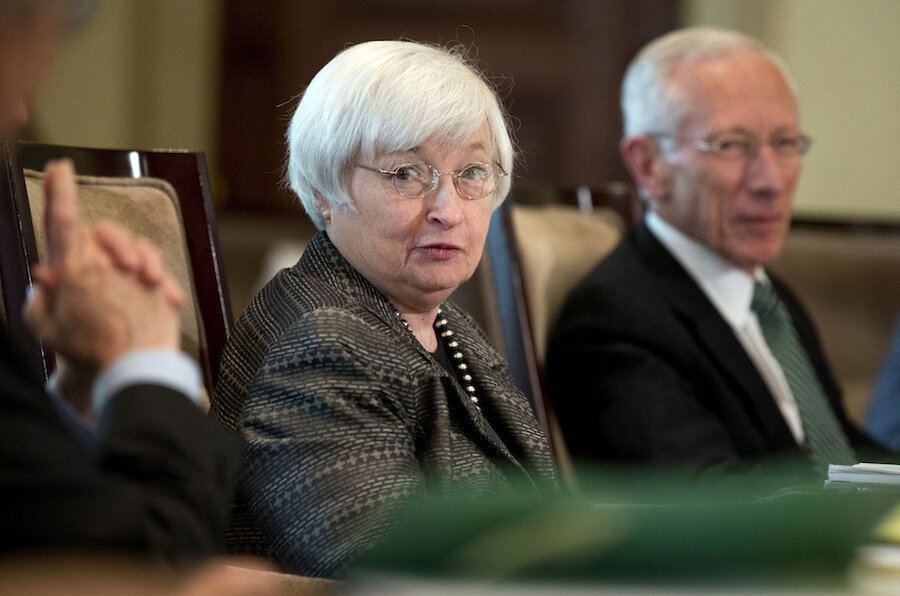August jobs report raises questions about the Fed's next steps
Loading...
For months now, the financial world has been looking for a definitive sign – any sign – that the US economy is strong enough to be rid of the last measures put in place to prop it up during the worst depths of the Great Recession over six years ago. It didn’t get it from the August jobs report.
The US economy added 173,000 jobs last month, about 45,000 shy of the 220,000 economists were expecting. The unemployment rate fell from 5.3 percent to 5.1 percent – its lowest level since April 2008.
The performance was underwhelming compared with what we’ve come to expect from the jobs data. Over the past year, payrolls have grown at an average of 247,000 jobs per month, making it one of the economy’s few, consistent bright spots. But the past few reports have been good – not great – and worries linger, including the snail's pace of hourly wage growth and historically low labor force participation.
Indeed, labor force participation, or the percentage of Americans working or actively looking for work, remained near a 40-year low at 62.6 percent. The unemployment rate is close to what many economists consider “full employment,” but the low participation rate suggests to some that the labor market isn’t quite as healthy as a 5.1 percent rate might have suggested in previous decades.
The financial markets were frazzled Friday by the uncertain implications of the report. The Dow fell more than 200 points in morning trading.
A more dazzling showing would have been especially welcome this month, because it is the last before the Federal Reserve’s Federal Open Market Committee (FOMC) meeting on Sept. 16 and 17. Fed chief Janet Yellen has said that the central bank expects to raise rates before 2015 is out, and many experts had expected the first hike to be announced at the September meeting. But recent instability, including financial trouble in China and resulting volatility in the US markets, have cast doubt on the Fed’s timeline, and the August data has done little to clarify things.
The report “gives frustratingly little new insight into whether the Fed will start to hike rates,” MarkIt economist Chris Williamson writes in an e-mailed analysis. “The report has been one of the most eagerly awaited so far this year, as it provides a last-minute steer to policymakers… A bumper payrolls number would have sealed the case for higher interest rates in many people minds, while a low number would have dealt a blow to any chances of tightening of policy at the next meeting. Instead, we had something in the middle.”
Another concern is that while the birds-eye view of the economy has been quite nice over the past few years, things don’t look quite as rosy at the ground level. Many of the spoils of recent growth, economists say, have been concentrated at the top, and have failed to reach most low- and middle-income Americans. Despite hiring gains, the take-home pay of most workers has effectively fallen since 2009 thanks to stagnant wages, according to a report released Thursday by the left-leaning National Employment Law Project (NELP). The report found that the country’s lowest-paid workers have taken the biggest hit.
There were small signs of progress in the August report, however. Hourly wages ticked up 0.3 percent – a solid monthly gain. The average workweek and average hours worked ticked up, and job gains were seen in all of the job market except manufacturing and information processing. Furthermore, June and July’s figures were revised upward, meaning job growth has been healthier than initial reports suggested over the past few months
“The weakness in August employment should not be over-interpreted,” IHS Global Insight chief economist Nariman Behravesh wrote in an e-mail. “August data are almost always revised up— sometimes substantially. More important, the three-month and year-to-date averages look solid.”
The Fed's take has been similar, and its position on rates will be based on the market's performance over time, not a single monthly report. Whether that means a liftoff is ahead in a few weeks, however, is still a question mark.






